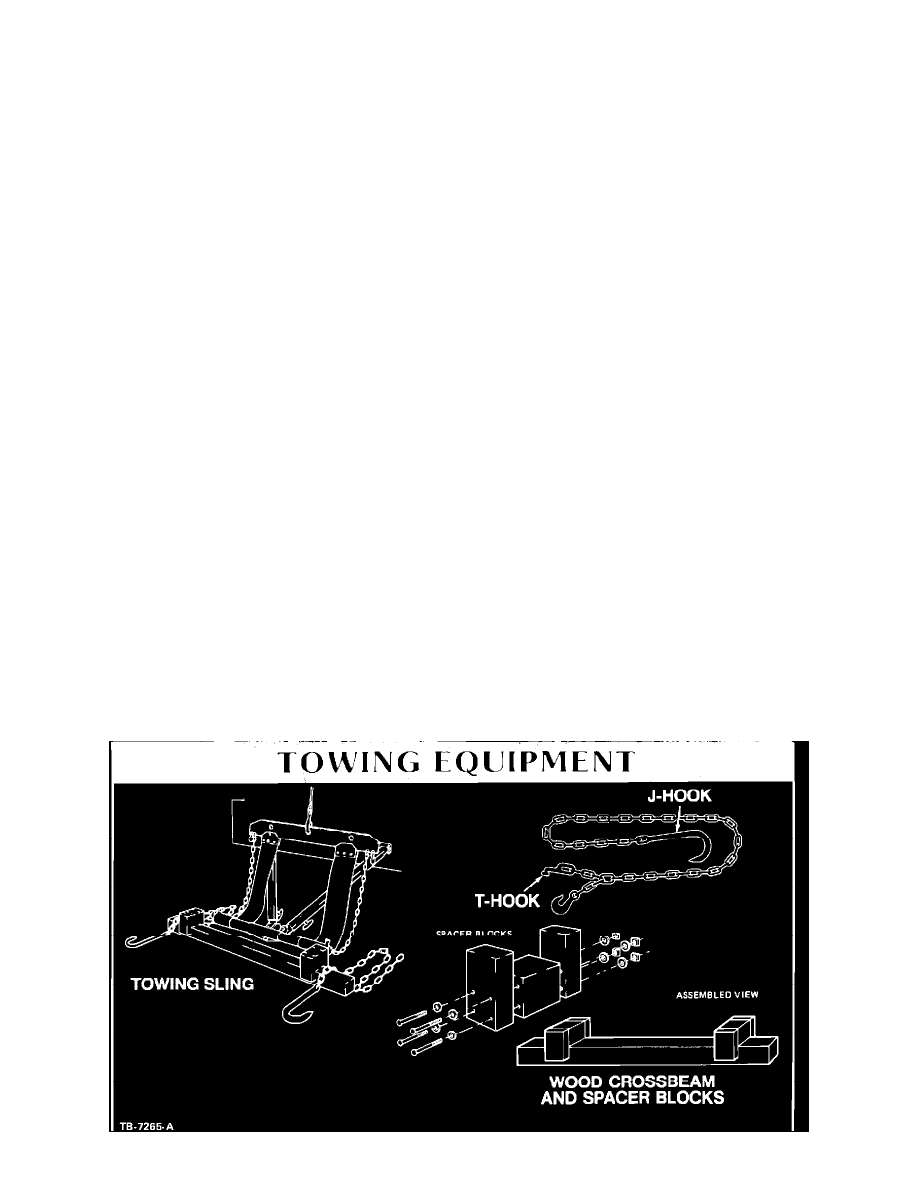Mustang V6-232 3.8L VIN 3 TBI (1984)

Towing Information: Technical Service Bulletins
Towing Instructions
Article No. 84-1-8
TOWING INSTRUCTIONS - 1984 MUSTANG GT
FORD 1984 MUSTANG GT
Instructions for front towing of the 1984 Mustang GT were not available at the time of printing of the 1984 Towing Instructions Manual. These
instructions follow:
Preparatory Steps
Release the parking brake, and place transmission in Neutral. As a general rule, towed vehicles should be pulled with the the driving wheels off the
ground. If the driving wheels cannot be raised off the ground, place them on a dolly or disconnect the driveshaft (except FWD vehicles).
When a vehicle is pulled on its front wheels, the steering wheel must be clamped in the straight ahead position with a steering wheel clamping device
designed for towing service use, such as those provided by towing system manufacturers. Do not use the vehicles steering column lock to lock the wheels
in straight ahead position when pulled from the rear.
If the ignition key is not available, place a dolly underneath the driving wheels of the vehicle and tow with the non-driving wheels raised.
Towing Slings
To avoid metal to metal contact and possible damage to chrome or lower body panels, a special wide-belt sling should be used to lift and tow ALL
vehicles. When attaching towing slings, take care to avoid damage to license plate and frame.
Towing Speeds
When it is necessary to tow the vehicle with the driving wheels on the ground, do not exceed 35 mph (56 km/h) or 50 miles (80 km) or transmission
damage can result.
Towing speed is to be limited to 50 mph (80 km/h) with the driving wheels off the ground. On rough pavement, the maximum towing speed is 35 mph
(56 km/h). Maximum towing speed of 35 mph (56 km/h) should be used whenever the tow truck operator is not sure of road surface condition.
IMPORTANT SAFETY NOTICE NOTES, CAUTIONS, AND WARNINGS
As you read through the procedures, you will come across NOTES, CAUTIONS, AND WARNINGS. Each one is there for a specific purpose. NOTES
give you add - ed information that will help to complete a particular procedure. CAUTIONS are given to prevent you from making an error that could
damage the vehicle. WARNINGS remind you to be especially careful in those areas where carelessness can cause personal injury.
